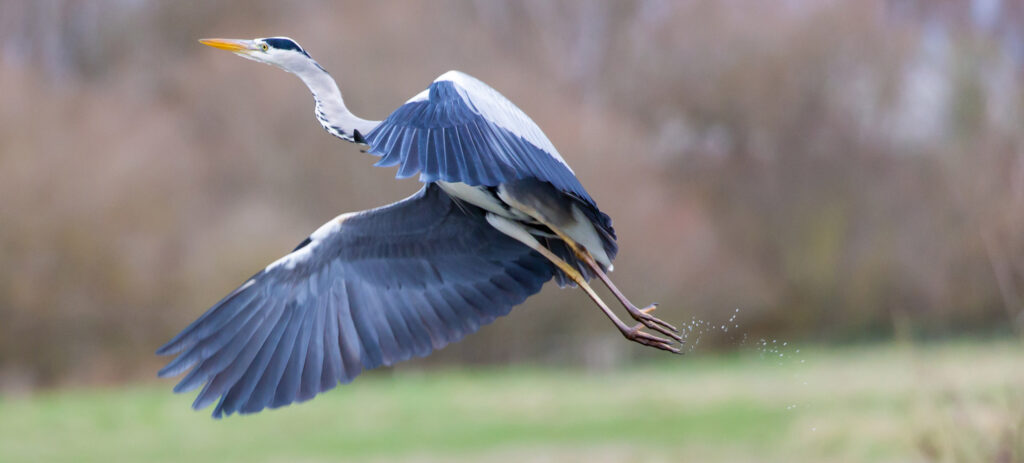GREAT BLUE HERON, SOUND, WINGSPAN, DIET, SIZE, MIGRATION, SYMBOLISM, FUN FACTS, IMAGES, VIDEO

To begin with, the Great Blue Heron, scientifically known as Ardea herodias, is a large, long-legged wading bird native to North America and found in other parts of the world through the introduction.
COLORS
With its distinctive blue-grey plumage and long neck, it is one of the most recognizable waterbirds.
WINGSPAN
The Heron has a wingspan of approximately 6 feet and can stand up to 4 feet tall, making it one of the largest North American wading birds.
DIET
It is a carnivorous bird and feeds on a variety of prey, including fish, amphibians, reptiles, and small mammals. In fact, it uses its long, sharp bill to spear its prey and has excellent eyesight to locate its food in the water.
HABITAT
This bird can be found near various water sources, such as lakes, rivers, wetlands, and coastlines.
NEST
It builds its nest in trees near water, and during the breeding season, it forms colonies with other herons. The female lays 3-6 blue-green eggs, and both parents take turns incubating them.
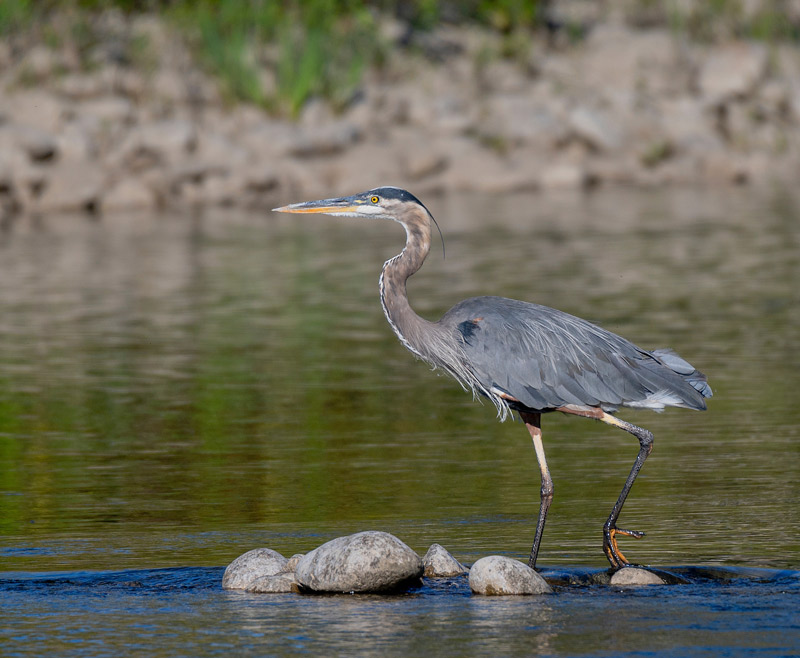
RANGE
To pursue, the Great Blue Heron has a wide range, spanning from Alaska to Panama, but its populations have declined in some areas due to habitat destruction and human disturbance.
For instance, to protect this species and its habitat, conservation efforts have been implemented, including the protection of wetlands and river ecosystems.
SOLITARY BIRD
It is known for its solitary and graceful behavior, often standing still for long periods of time while waiting for prey.
Despite its size and impressive appearance, it is a graceful flier, with slow, deliberate wingbeats that allow it to glide smoothly over the water.
MIGRATION
During migration, the Great Blue Heron can fly over 1000 miles in a single day, relying on thermals to help it soar to great heights.
SOUND
Another interesting aspect of the Great Blue Heron is its varied vocalization. It produces a variety of sounds, including deep croaks, harsh grunts, and shrill cries, which are used for communication, aggression, and territorial displays.
During the breeding season, the males display courtship behavior, including “unruffling” their feathers, puffing up their necks, and engaging in aerial displays.
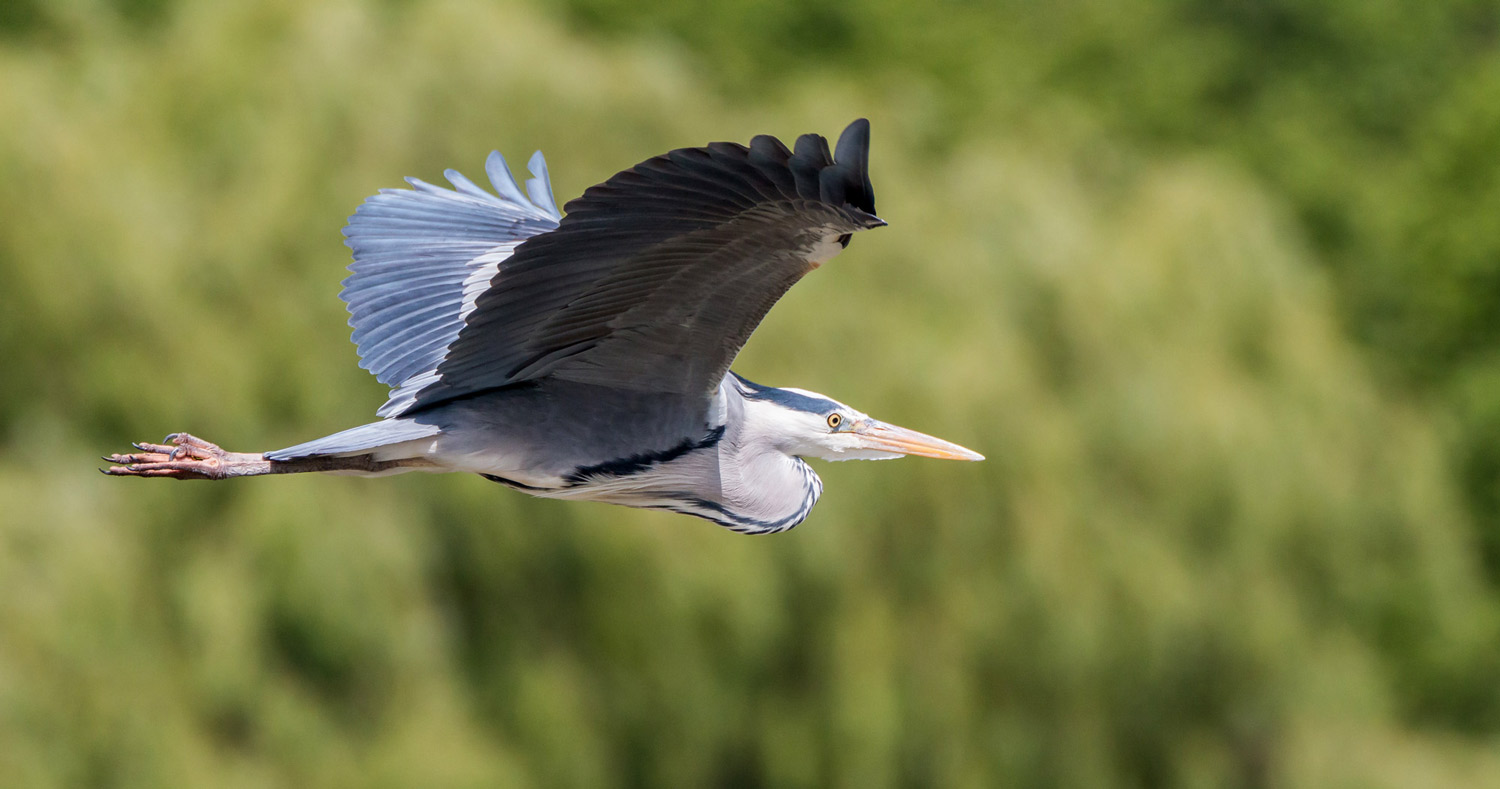
SYMBOLISM
In terms of cultural significance, the Great Blue Heron has been an important symbol for various indigenous cultures, including the Haudenosaunee and the Coastal Salish.
In these cultures, the heron is often associated with creation stories and is seen as a powerful and spiritual bird.
ECONOMIC ROLE
In addition to its ecological and cultural significance, the Great Blue Heron also has economic importance.
As a top predator in its habitat, it helps to maintain the balance of the ecosystem and control populations of smaller animals.
Furthermore, its presence near water bodies attracts bird-watching enthusiasts and nature tourists, who bring in significant revenue for local communities.
VULNERABILITY
Even with its large size and impressive appearance, the Great Blue Heron is vulnerable to human activities that threaten its habitat.
For example, habitat destruction, pollution, and overfishing have all contributed to declining populations in some areas. Yet, the use of pesticides and other chemicals in agriculture can poison the bird and its prey, leading to further declines.
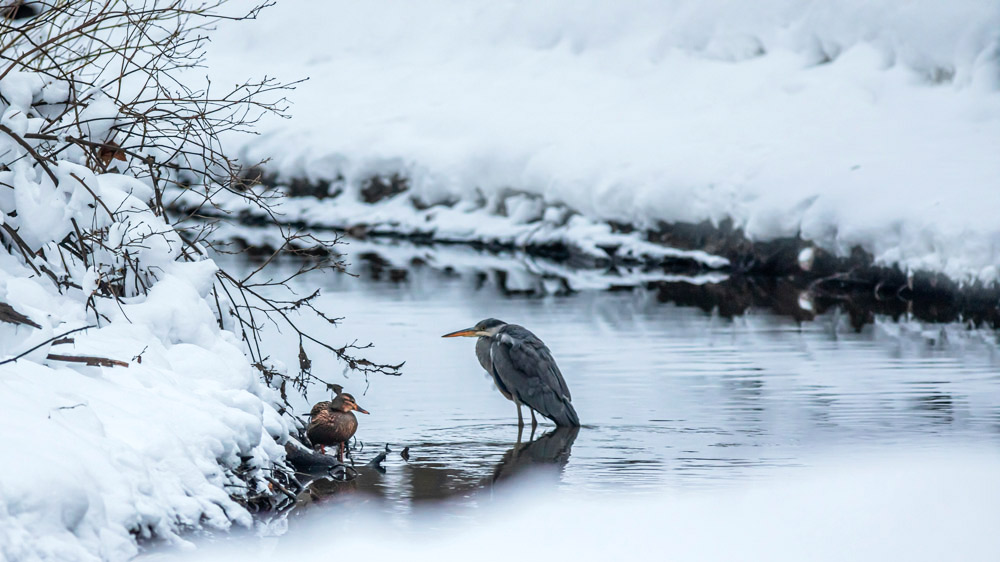
HOW TO PROTECT THEM?
Conservation efforts are crucial in protecting the Great Blue Heron and its habitat. This can include preserving and restoring wetlands, protecting nesting sites, and reducing the use of harmful chemicals.
To add more, education and outreach programs can raise awareness about the importance of this bird and the need for conservation.
A PROTECTED SPECIES
It’s worth mentioning that the Great Blue Heron is a protected species under the Migratory Bird Treaty Act of 1918.
Indeed, this act provides federal protection for migratory birds and their habitats, making it illegal to kill, harm, or take eggs from protected species without a permit.
This legislation has helped to conserve migratory bird populations, including the Great Blue Heron, for nearly 100 years.
FACING THREATS
Regardless of the legal protection, the Great Blue Heron still faces various threats from human activities.
As a matter of fact, the destruction of wetlands and other water sources is a major concern, as it reduces the bird’s available habitat.
Climate change is also a growing threat, as rising temperatures and changing precipitation patterns can alter the timing and availability of food sources, as well as the timing of migration and breeding.
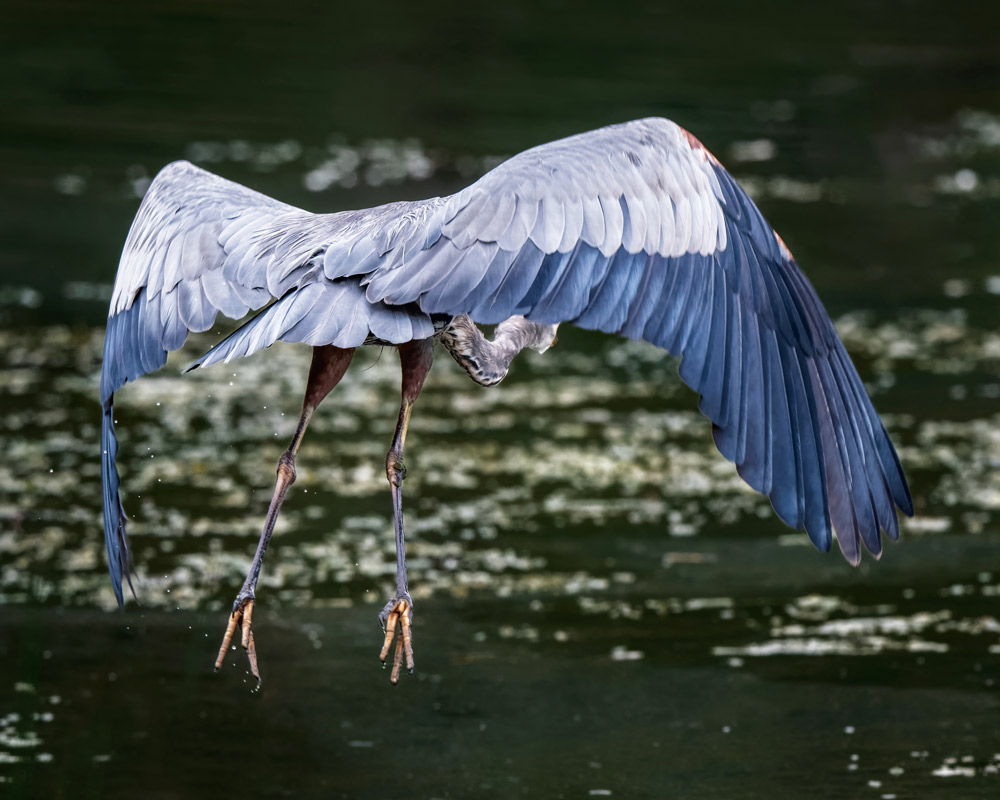
RESTORATION OF WETLANDS
Conservation organizations and government agencies are working together to protect the Great Blue Heron and its habitat.
Restoration and management of wetlands, monitoring of populations, and regulation of harmful activities are some of the efforts being made to conserve this species.
RESEARCH
Additionally, research on the biology and ecology of the Great Blue Heron is helping to provide a better understanding of the species and inform conservation efforts.
RESPONSIBLE WILDLIFE WATCHING
Another way to support the conservation of the Great Blue Heron is through responsible wildlife watching. In fact, observing and photographing birds can be a fun and educational activity, but it’s important to do so in a responsible manner.
It’s important to avoid disturbing the birds during nesting season, stay a safe distance away, and not use audio lures or feed the birds. When hiking or kayaking in areas with herons, keep a low profile and minimize noise to avoid disturbing the birds.
TAKING CARE OF THE ENVIRONMENT
It’s also important to reduce our personal impact on the environment. Simple actions such as reducing water usage, properly disposing of waste, and using eco-friendly products can help to protect wetlands and other habitats for the Great Blue Heron and other wildlife.
Moreover, supporting organizations that work to conserve wetlands and migratory bird habitats is a great way to help protect this species and its habitat.
AWARENESS
Finally, it’s important to raise awareness about the Great Blue Heron and the importance of conservation.
Share information about this species with friends and family and participate in local events that promote bird conservation. By working together and acting, we can help ensure the continued survival of the Great Blue Heron and other wildlife.
WIDE DISTRIBUTION
It’s also important to note that the Great Blue Heron is not just found in North America. This species has a wide distribution, occurring across much of North America, as well as in Central and South America.
Actually, the Great Blue Heron is considered one of the most widespread herons in the world and is found in a variety of habitats, from wetlands and marshes to estuaries and coastlines.
DECLINE IN POPULATION
Even if the Great Blue Heron has a wide distribution, it can be locally threatened by various factors, including habitat destruction, pollution, and overfishing.
In some areas, heron populations have declined significantly, highlighting the need for continued conservation efforts.
In conclusion, the Great Blue Heron is a magnificent bird that is important for its ecological, cultural, and economic significance. With its wide distribution and varying habitats, the Great Blue Heron serves as a symbol of the beauty and diversity of nature. By supporting conservation efforts and reducing our impact on the environment, we can help ensure the survival of this species for future generations to appreciate and enjoy.
WANT TO LEARN MORE? TAKE A LOOK AT THESE ARTICLES:
- The Scarlet Macaw
- The Scarlet Ibis
- Lovebirds
- The Female Cardinal
- The Great Egret
- The Great Blue Heron
- The American Robin
- The Northern Cardinal
- The Dark-Eyed Junco
- The Blue Jay
- The Gray Catbird
- The Tufted Titmouse
- The Red-winged Blackbird
- The Black-capped Chickadee
- The Evening Grosbeak
- The Common Starling
- The Kiwi Bird
- Wild Birds Unlimited

